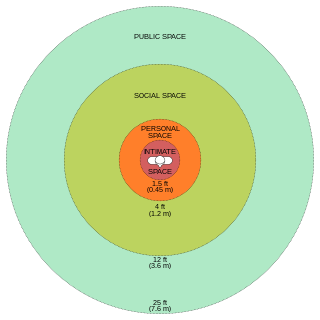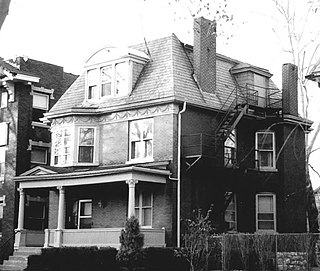
Percy Williams Bridgman was an American physicist who received the 1946 Nobel Prize in Physics for his work on the physics of high pressures. He also wrote extensively on the scientific method and on other aspects of the philosophy of science. The Bridgman effect, the Bridgman–Stockbarger technique, and the high-pressure mineral bridgmanite are named after him.

Kenneth Geddes "Ken" Wilson was an American theoretical physicist and a pioneer in leveraging computers for studying particle physics. He was awarded the 1982 Nobel Prize in Physics for his work on phase transitions—illuminating the subtle essence of phenomena like melting ice and emerging magnetism. It was embodied in his fundamental work on the renormalization group.

Joseph Hooton Taylor Jr. is an American astrophysicist and Nobel Prize laureate in Physics for his discovery with Russell Alan Hulse of a "new type of pulsar, a discovery that has opened up new possibilities for the study of gravitation."

The New England Conservatory of Music (NEC) is a private music school in Boston, Massachusetts. It is the oldest independent music conservatory in the United States and among the most prestigious in the world. The conservatory is located on Huntington Avenue of the Arts near Boston Symphony Hall and is home to 750 students pursuing undergraduate and graduate studies, along with 1400 more in its Preparatory School as well as the School of Continuing Education. NEC offers bachelor's degrees with majors in classical performance, contemporary improvisation, composition, jazz, musicology, and music theory. The conservatory offers additional graduate degrees in accompaniment, conducting, and vocal pedagogy. Also offered are five-year joint double-degree programs with Harvard University and Tufts University. The New England Conservatory's faculty and alumni, which comprise nearly fifty percent of the Boston Symphony Orchestra, include 6 members of l'Ordre des Arts et des Lettres, 14 Rome Prize recipients, 51 Guggenheim Fellows, and prizewinners at nearly every major respected music forum in the world. As of January 2020, 11 MacArthur Fellows have been affiliated as faculty or alumni.

In research design, especially in psychology, social sciences, life sciences and physics, operationalization or operationalisation is a process of defining the measurement of a phenomenon which is not directly measurable, though its existence is inferred by other phenomena. Operationalization thus defines a fuzzy concept so as to make it clearly distinguishable, measurable, and understandable by empirical observation. In a broader sense, it defines the extension of a concept—describing what is and is not an instance of that concept. For example, in medicine, the phenomenon of health might be operationalized by one or more indicators like body mass index or tobacco smoking. As another example, in visual processing the presence of a certain object in the environment could be inferred by measuring specific features of the light it reflects. In these examples, the phenomena are difficult to directly observe and measure because they are general/abstract or they are latent. Operationalization helps infer the existence, and some elements of the extension, of the phenomena of interest by means of some observable and measurable effects they have.

Roy Jay Glauber was an American theoretical physicist. He was the Mallinckrodt Professor of Physics at Harvard University and Adjunct Professor of Optical Sciences at the University of Arizona. Born in New York City, he was awarded one half of the 2005 Nobel Prize in Physics "for his contribution to the quantum theory of optical coherence", with the other half shared by John L. Hall and Theodor W. Hänsch. In this work, published in 1963, he created a model for photodetection and explained the fundamental characteristics of different types of light, such as laser light and light from light bulbs. His theories are widely used in the field of quantum optics. In statistical physics he pioneered the study of the dynamics of first-order phase transitions, since he first defined and investigated the stochastic dynamics of an Ising model in a largely influential paper published in 1963. He served on the National Advisory Board of the Center for Arms Control and Non-Proliferation, the research arms of Council for a Livable World.

Pupin Physics Laboratories, also known as Pupin Hall, is home to the physics and astronomy departments of Columbia University in New York City. The building is located on the south side of 120th Street, just east of Broadway. In 1965, Pupin was named a National Historic Landmark for its association with experiments relating to the splitting of the atom, achieved in connection with the later Manhattan Project. In 2009 the American Physical Society named Pupin Hall a historic site and honored Isidor Isaac Rabi for his work in the field of magnetic resonance.

The George D. Birkhoff House is a historic house located at 22 Craigie Street, Cambridge, Massachusetts. It was designated a National Historic Landmark in 1975 for its association with Harvard University Professor George David Birkhoff (1881–1944), one of the most important mathematicians of his time.

The Reginald A. Daly House is a historic house located in Cambridge, Massachusetts. It is a National Historic Landmark, notable for its association with Reginald Aldworth Daly (1871–1957), an eminent geologist, Penrose Medal winner, and Harvard University professor.

The Maria Baldwin House is a National Historic Landmark located at 196 Prospect Street, Cambridge, Massachusetts, United States. The house is the northern half of a 19th-century two-family house, notable for its associations with educator Maria Louise Baldwin (1856–1922). It was her home when she served as the first female African-American principal in a Massachusetts school at Cambridge's Agassiz Grammar School. As master, she supervised 12 teachers, all white, who presided over a 98% white student body. The Agassiz School has since been renamed the Maria Baldwin School in her honor. The Baldwin House was declared a National Historic Landmark in 1976.

The Arthur H. Compton House is a historic house at 5637 South Woodlawn Avenue in Chicago, Illinois. Built in 1905 and designed by architects Holabird & Roche, it was the residence of physicist Arthur Compton (1892–1962) from 1928 until 1945. Compton discovered the Compton Effect in 1923, proving that light has both a particle and a wave aspect. Compton received the Nobel Prize in Physics in 1927 for this discovery. His house was designated a National Historic Landmark in 1976.

The Robert A. Millikan House is a historic house at 5605 South Woodlawn Avenue in the Hyde Park community area of Chicago, Illinois, Built about 1907, it was from about 1908 until 1921 the home of American physicist Robert A. Millikan (1868-1953), the period in which he made his most significant Nobel Prize winning work. The three-story brick building earned National Historic Landmark status on May 11, 1976.

The Irving Langmuir House is a historic house at 1176 Stratford Road in Schenectady, New York. Built about 1900, it was the home of physicist-chemist Irving Langmuir, winner of the 1932 Nobel Prize in Chemistry during his research career with General Electric. It was declared a National Historic Landmark in 1976.

The Albert Einstein House at 112 Mercer Street in Princeton, Mercer County, New Jersey, United States was the home of Albert Einstein from 1935 until his death in 1955. His second wife Elsa Einstein died in 1936 while living in this house.

The William Morris Davis House is a National Historic Landmark on 17 Francis Avenue in Cambridge, Massachusetts. An architecturally undistinguished Queen Anne-era house, probably built in the 1890s, it is notable as the home of William Morris Davis between 1898 and 1916. Davis (1850-1934) was a professor of geology at Harvard University, and an influential figure in the development of meteorology and geomorphology as scientific disciplines. His textbook Elementary Meteorology was a standard of that field for many years. The house was declared a National Historic Landmark in 1976.

The Theodore W. Richards House is a National Historic Landmark at 15 Follen Street in Cambridge, Massachusetts. Built in 1900, it was the home until his death of Theodore William Richards (1868-1928), the first American to be awarded the Nobel Prize in Chemistry. Richards was a leading experimental chemist of his day, measuring the atomic weights of a large number of elements. He was also responsible for the growth of Harvard University's graduate chemistry program to one of the finest in the nation. The house was designated a National Historic Landmark in 1976.

The George R. Minot House is a National Historic Landmark in Brookline, Massachusetts. It is an architecturally undistinguished vernacular Colonial Revival brick house, probably built in the 1920s. The 2+1⁄2-story main block has an attached 1+1⁄2-story ell, and two end chimneys. The hip roof is pierced by gabled dormers, and a pedimented portico shelters the front entry.

The Joseph Erlanger House is a historic house at 5127 Waterman Boulevard in St. Louis, Missouri. As a National Historic Landmark, it was designated to recognize the achievements of Joseph Erlanger (1874-1965), an American doctor and physiologist, who was awarded with the Nobel Prize in medicine in 1944. It was Erlanger's home from 1917 until his death. It was declared a National Historic Landmark in 1976. However, the house is not open to the public.
Zachary John Dutton is an American physicist who has worked on research centred mainly around cold atomic gases, EIT, low light level nonlinear optics, quantum memories, and coherent optical. Dutton graduated from Lindsay High School in Lindsay CA, and was awarded a BSc in Physics from UC Berkeley in 1996. He was awarded his PhD in theoretical physics at Harvard University in 2000. His doctoral advisor was Prof.Lene Hau for his thesis entitled "Ultra-slow, stopped, and compressed light in Bose–Einstein condensates" He worked on a number of papers with Hau and Cyrus Behroozi, being amongst the first group to stop light completely. He undertook postdoctoral work at NIST–Gaithersburg with Dr. Charles Clark, prior to becoming a staff physicist at the Naval Research Lab in Washington. He conducted research centred mainly around cold atomic gases, EIT, low light level nonlinear optics, quantum memories, and coherent optical storage.

Edmund Asa Ware was an American educator and the first president of Atlanta University, serving from 1869 to 1885.






















